Location Report – Death Valley National Park

Storm approaching the Racetrack Playa in Death Valley © Mac Danzig
If you immediately think of nothing but extreme heat and barren desert when the words “Death Valley” come to mind, you most likely haven’t experienced this incredible place first-hand… Yes, the heat is ridiculous in the summer at the valley-level areas of the park, but DVNP has way more to offer than the stereotypical idea of extreme heat and sand.
As of the time this writing, I have been to Death Valley for Photography nine times and if I have anything to say about it, there will be many more trips in the future. Every time I have visited, I have come back with usable images no matter what conditions the weather provided and each time I have seen something completely new. In addition, every single excursion to this beautiful place has had a profound effect on me.
Death Valley National Park is the largest National Park in the lower 48 states, covering 5,262 square miles. On any given day, you are likely to see and experience a plethora of Natural Phenomena. From snow-capped peaks, to rolling sand dunes, to Ghost Town remains and everything in between. Death Valley is, in my opinion the most geologically diverse Natural area in North America and that is a notion that definitely lends itself to success in photography.
Those of you who are familiar with my work know that I am a huge fan of remote places. I have gone out of my way to go ‘out of the way’ as much as possible. Death Valley absolutely fulfills the need for solitude and desolation, as long as you are willing to do a little (or a lot of) driving beyond the main tourist areas. Keep in mind that all of these great spots are very far from each other, for the most part and I recommend either an extended stay, or exact planning of your time to get the most out of your visit. For example, the Badwater area includes Artist’s Palette, numerous salt flats and the incredible Devil’s Golf Course. They are all within 20 mins of each other, and fairly close to the two hotels in the area, but nowhere even remotely near the Racetrack, Wildrose Charcoal kilns, or any of the high-altitude overlook views.
In this article I will only cover the sections of the park I am familiar with, and of those, the ones I believe to be the best areas for good photo ops.
Here is a link to a google map I’ve made of the area. I will link again to it at the end of the article.
View Death Valley Photography spots in a larger map
The Racetrack Playa
Might as well start with my favorite spot in the entire park and probably one of the most remote areas in all of Death Valley; The Racetrack. This basin is an ancient dry lake bed with an amazing textured floor that includes the phenomena of the infamous “sailing stones.”

"110 Degrees" © Mac Danzig
Although the road to get to the Racetrack from both North and South is very rough, winding, and filled with large, loose natural gravel rocks that are quite sharp in spots, chances are you’ll see a few other folks (even in passenger cars) during a September or April trip when the weather is the most comfortable. If you go during the colder months, there’s an excellent chance you’ll have the entire area to yourself.
Words can’t really describe the feeling you get at the Playa. Especially if you are the only one there… Bordered on the West by the Last Chance Range, and on the East by the Cottonwood mountains, a feeling of solitude is experienced naturally. The silence itself can be immense and profound. Every experience I’ve had at this location has left me longing to return again.
My advice is to spend at least 24 hours here if possible. There are a few first-come-first-serve campsites just south of the Racetrack that will leave you easy access for sunrise and sunset light. And if you’re a nocturnal shooter like me, spending at least 1 night here is a must.

Moonrise on the Playa © Mac Danzig
In addition to the lake bed itself containing the “sailing stones” is the “Grandstand”: a protrusion of black basaltic rock that sits 75 feet above the floor at the northwestern corner of the playa. This is easily seen from the road or anywhere in the area, really. And if you are looking for a good star-trail foreground subject or an interesting focal point beyond the normal shot, the Grandstand may be a good bet.

"First Light of the Day" © Mac Danzig (The Grandstand can be seen at the horizon below the mountains, center-left)
When walking out on the Playa, distance is not always what it seems. You may find yourself heading towards a vague landmark while looking for rocks with trails to photograph, and end up spending triple the amount of time you expected to get to an area that seemed fairly close. This isn’t necessarily a negative though (unless you foolishly visit in the dead of summer) because the more time spent here, the better, in my opinion.
Light is best in early morning, once the sun has broken over the Cottonwood range, but great sunsets can also be had here as well, just remember that the mountain range to the east is quite close to the playa, and actual evening light sets behind it earlier than you may anticipate.
And of course, night time shooting is excellent here. During a new moon, you are far away enough from light pollution that the stars really stand out. The Racetrack is perhaps one of the best places in Death Valley to photograph the night sky.

"Galaxis" - A shot of the Milky Way from the Racetrack about 1 hour before sunrise. © Mac Danzig
Getting there can be a bit of a struggle, depending on your vehicle and your patience for rough back-roads. A high-clearance 4wd vehicle isn’t 100% necessary to get here, but having one will make your trip a lot more comfortable, safer and many times quicker. Always carry a full-size spare, no matter what kind of car you take here. The large, sharp natural gravel can flatten any tire, and in many areas of the road, there is no ideal place to pull-over and change a flat.
The Racetrack can be accessed from either the north or south, but the northern route is probably the best for most situations.
Coming from the north, you will pass Ubehebe Crater, (a half-mile wide volcanic crater that is estimated to be over 5000 years old) just before the road turns to dirt and becomes very rough and rocky. Although not as immediately photogenic as you’d imagine, Ubehebe is definitely worth a stop to look at and experience. On certain days, the wind at the top of the crater picks up so high that you can literally lean your entire body weight over the edge and be supported.
The first 30 miles or so to the track via Ubehebe is windy 1-lane gravel. The last 4 miles before you reach the Playa turn from rocky to washboard… The kind of washboard road that will vibrate the eyes out of your head if you ride too fast on it. This is another reason to have a vehicle with the kind of suspension that can handle these roads.

"Desert Floor" © Mac Danzig
Once you get there, my suggestion is to take a few moments to really absorb the atmosphere before you begin shooting. There are 3 parking areas (north, middle and south) that have easy access to walk directly onto the playa. Keep in mind that in order to find some good rock trails, you must be prepared to do some hiking out onto the lake bed. There are no sign or trails, just a giant, wide-open playground with limitless photographic potential.
Sand Dunes

© Mac Danzig
There are three major groups of dunes in Death Valley: Mesquite dunes (near Stovepipe Wells), Panamint dunes and Eureka Dunes.
By far the most accessible of the three is the Mesquite Dunes. Unfortunately it’s also the most visited and therefore the most footprint-littered. During the months of April/May and September, these dunes a lot of tourism. Depending on recent wind and rain activity, you’ll sometimes have to hike quite a way during these peak months to find untouched sand, but it’s still an amazing location. If you stop by here, you’ll be close to Stovepipe Wells, which contains a small convenience store, gift shop and over-priced gas, if you need it.
Regardless of the season or current wind conditions, it’s always a good idea to protect your equipment in the sand dunes. There are only two times that I’ll put a uv filter on the front of my lens – shooting near splashing salt water, and shooting near large bodies of sand. Hiking to find the right spot to shoot can take a long time and end up being more of a workout than you bargained for. The soft sand is really hard to traverse and I’ve found myself and my gear submerged into the sand on more than one occasion. Always keep what you’re not using zipped up in your bag. Take great care when changing lenses – any stray grains of sand blown into the camera body can cause a post-processing nightmare.

The thermometer on my compass reads 111.4 F. This was during May right before sunset.
Hiking the dunes at night is an awesome experience. Because of how disorienting an area like this can be, (especially at night) I always carry a GPS with me, even if there’s a full moon. All these rolling hills can blend together and finding your way out can be real pain.
If you want a less-traveled location, check out either the Panamint Dunes or the Eureka Dunes on the North end of the Park. If you are coming from Big Pine, CA, Eureka Dunes can be visited on the way to the Racetrack. They are much larger and more interesting than the Mesquite Dunes, in my opinion.

"Moonlit Hourglass" © Mac Danzig
Furnace Creek and Vicinity
Furnace Creek, is pretty much the only “town” in Death Valley. It includes a visitor’s center, two campgrounds, the only two hotels in the entire National Park and the only real restaurant. If you station yourself here, you’ll have relatively close access to the Badwater Salt Flats, the Devil’s Golf Course, Artist’s Pallette and Zabriskie Point.

© Mac Danzig
Zabriskie Point is an overlook area that also includes a primitive hikable trail system. From the overlook you an see the salt flats as well as Wildrose Peak across the Badwater Valley. It’s mostly a sunrise/early morning spot, but great shots can be had here at sunset and nighttime as well. Don’t expect to have this place to yourself unless you go sometime during the off-season.
To see a panorama I made of Zabriskie Point hosted on Gigapan and gain a better idea of the view point, click here.

sunrise over Zabriskie Point © Mac Danzig
The Badwater Salt flats are one of the main attractions for people staying at Furnace Creek. Badwater is the lowest point in the Western Hemisphere. Most people visiting here will stop off at the parking lot with a little boardwalk. I suggest driving a little further down and pulling off of the road to find some un-trampled areas of the flats.

"NaCl Earth" - Badwater Salt Flats © Mac Danzig
The Devil’s Golf Course is a rather unfortunately-named section of Badwater that is my personal recommendation as a must-see if you’re in the Furnace Creek area. It’s a salt pan with huge, random, jagged formations of salt that formed when the body of water there evaporated. (Much of Death Valley NP was underwater at one time and discoveries of fish fossils are still being unearthed at higher elevations in the park). Seriously, be careful when you walk on this. The floor here is sharp and not as brittle as you might think. It would suck pretty bad to get cut open by a lump of serrated salt.
DGC can be an excellent evening location once the sun lowers behind the mountains, especially if there are good groups of clouds present to catch the light. Sunrise of course lends itself to this location very well too.

"Salt and Storm" - Devil's Golf Course © Mac Danzig
Overlooks
Beside all of the ground-level geographic features, there are plenty of high-altitude overlooks spread throughout the park. Many of the overlooks are truly amazing depending on what kind of light you have, but they are all very far from each other (Dante’s View, Augereberry Point, Telescope Peak, Father Crowley Point, etc)- Depending on how much time you have to spend, most likely you will only be able to get one or two of these in. Also, many times in DV, the light is hazy, even in early morning and late afternoon, so the lookout style points of interest may not end up being photogenic.

This is a telephoto view from Father Crowley Point, located on the eastern side of the park. From this vantage point, you are looking towards the West at Panamint Valley. Seen here is the snow-covered Panamint Range, 4000 feet above the arid Panamint Dunes below.
Dante’s View is a great early morning/sunrise location that looks northwest above the Badwater basin. If you enter the park from the southwest, via 190 fwy, it’s easy to get to… If you want to hike beyond the parking area here, you can go 4 miles one way to the Mt. Perry Summit, which is absolutely worth it, in my opinion.
Traveling through the Panamint mountain range gives some more opportunities for overlooks. Telescope Peak is the highest point in the park and is accessed by a 14-mile round-trip hike starting at Mahogany Flat Campground. In order to get up here, you’ll need a high clearance 4wd. This entire area is really photogenic and includes the Wildrose charcoal kilns on the way up the mountain. These are the best-preserved kilns in the west. The road turns from paved to dirt a few miles before the kilns and once past the kilns, turns very steep and rocky. Keep in mind that there is snow up here well into spring and the road isn’t really maintained. This is a good opportunity to get a some shots of the charcoal kilns with snow covering them and chances are, you won’t see many other people. These are best photographed in the early part of the day, because the sun washes out the sky from mid-day until evening when looking west here.

A quick snapshot of the Wildrose Charcoal kilns up in the Panamints.
Another overlook to check out if you’re in the Panamint range, near wildrose, is Aguereberry Point. I’ve only ever been there in winter, where the unmaintained dirt access road was covered in snow, but even then, it wasn’t too treacherous. From Aguereberry Point, you can see all the way across the west half Death Valley National Park. The silence up here is beautiful and only occasionally broken by whistling wind.
On the way to Aguereberry Point (named after miner Pete Aguereberry) is the Eureka mine and remnants of Pete Aguereberry’s home. Unfortunately, the Park service has deemed the mine unsafe recently and denied access to it, but hopefully some restoration will change that. You can still have a look at the old house where Pete used to live as well as some other decaying remnants.

Eureka Mine © Mac Danzig
If you find yourself in the Panamint Valley or near Panamint Springs, Darwin Falls is a decent little spot to visit with a short hike through a wash to get there. It is another prime example of the geological diversity in the area. You’ll want a high clearance vehicle to get to the trailhead. Keep in mind that during the summer months, the falls may be dry. (or so I’ve been told)

Darwin Falls © Mac Danzig
One example of the sporadic Death Valley weather was seen by me first hand one day in the winter. It was warm in the Panamint Valley during the morning hours. By mid-day, a strong storm came by and flooded the valley floor. Extremely strong winds arrived afterward and created waves on the large pools of water that had been formed by the rain.

© Mac Danzig
By this time, the temperature had dropped almost 20 degrees even though the sun was still bright.
Unpredictable weather is a staple of Death Valley in the winter months.
Ghost Towns and mining remnants in the area
In addition to the Eureka Mine previously mentioned, are plenty of ghost towns (and pieces of ghost towns) scattered throughout the park here and there. The ones worth visiting in my opinion are Ballarat and Panamint City (on the southeast side of the park) and Rhyolite- which lies in Nevada and is actually just outside the park boundaries on the Northwest side. Rhyolite is a perfect location to stop by if you are coming from the 95 fwy and using Beatty junction to enter the park. This old gold rush town is not hard to get to, and contains some of the most well preserved structures of any ghost town I’ve visited. The now-deceased Cook Bank, who’s frame and foundation are made of cement, is still standing. It’s roofless now and pieces keep coming down over the years, but the front wall should be there for a while unless there is some real seismic activity.

"Sundial" - the remnants of Cook Bank in Rhyolite, Nevada - © Mac Danzig
Rhyolite was a pretty happening place in it’s heyday. If you’re familiar with ghosts towns, you’ll know that there isn’t much left of them in most cases, so this old place is a welcomed change. There is also a cemetery near by which has quite a few old grave sites.
If you happen to be heading from Rhyolite towards the Racetrack, or even Stovepipe Wells and you have a good high clearance vehicle (and extra time), try taking Titus Canyon- just west of Rhyolite. It’s a beautiful drive and will lead you through the grapevine mountains just after passing the ghost town of Leadfield. This will take quite some time, so plan accordingly.
Wildlife
Animals are often hard to come by in DVNP, but a little time spent in the park should reveal a few of the park’s more visible creatures. There are plenty of native animals that have eluded me, but one has to remember that Death Valley and the desert in general does not harbor many creatures who make their living grazing out in the open.

© Mac Danzig
Still, you are sure to come across wildlife in many different parts of the Park if you’re willing to spend some time searching. I personally wouldn’t plan a photography trip to Death Valley for wildlife alone, but it’s a great idea to bring the telephoto and keep it handy.

Burro family seen near Surprise Canyon © Mac Danzig
Wild Burros can be seen throughout the eastern side of the park and if you hike into the mountains, you just might come across some Bighorn Sheep.

Bighorn Ewe in Happy Canyon near the trailhead to the ghost town of Panamint City © Mac Danzig
—————————————————————————–
If you haven’t been yet, hopefully you’ve now gained a better idea of what you can do here. If you’ve already visited, maybe this will spark your interest to return.
I personally cannot imagine my photography portfolio without this place and I owe much of the experience I’ve gained to it.
As far as I’m concerned, there is no place like it on earth.
Below is a map of the area I’ve made with placemarks that correspond with this article’s featured spots.
View Death Valley Photography spots in a larger map.
I plan on hosting a few photography workshops in the near future at Death Valley, with an emphasis on night time long exposures. Please check back on the blog in early 2010 for updates and schedule.
Thanks for reading.
-Mac

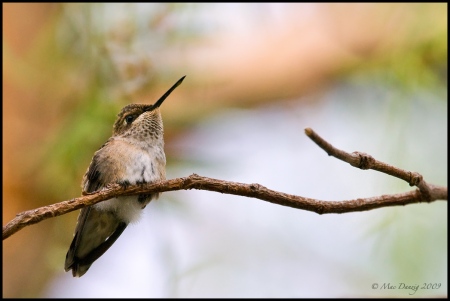
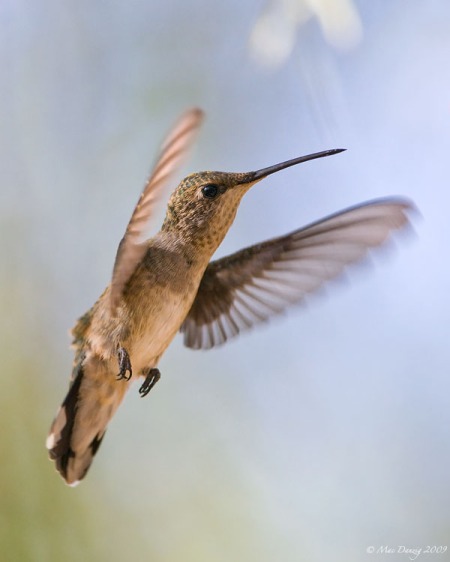
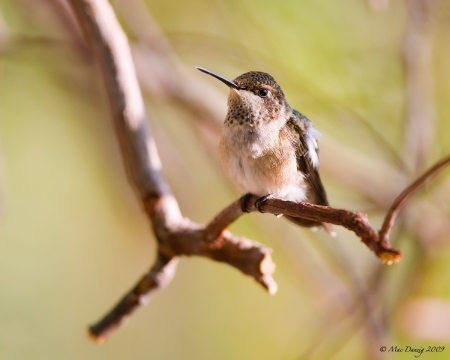
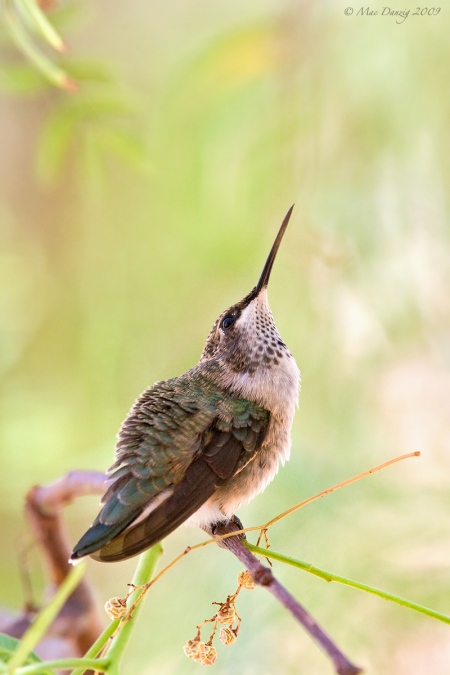
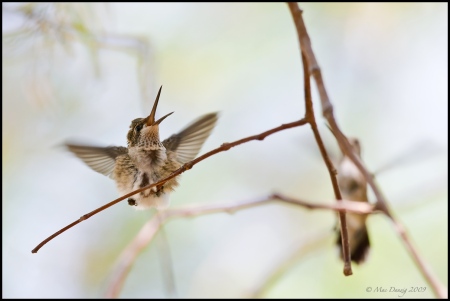

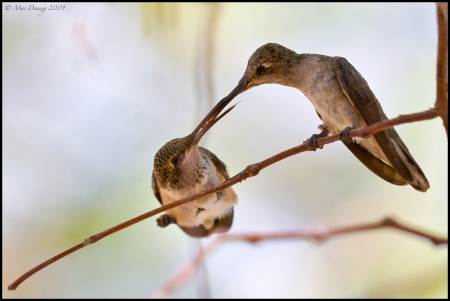
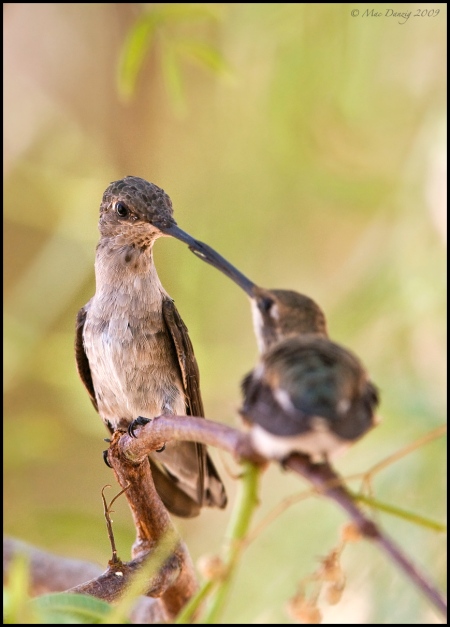
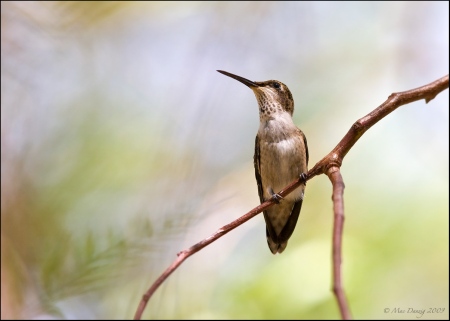
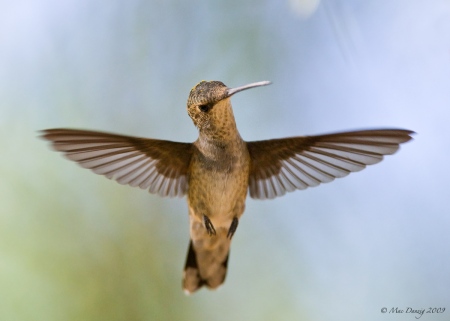
























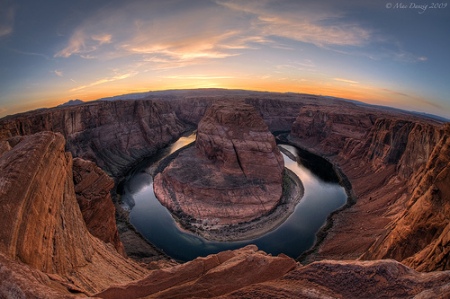


You must be logged in to post a comment.